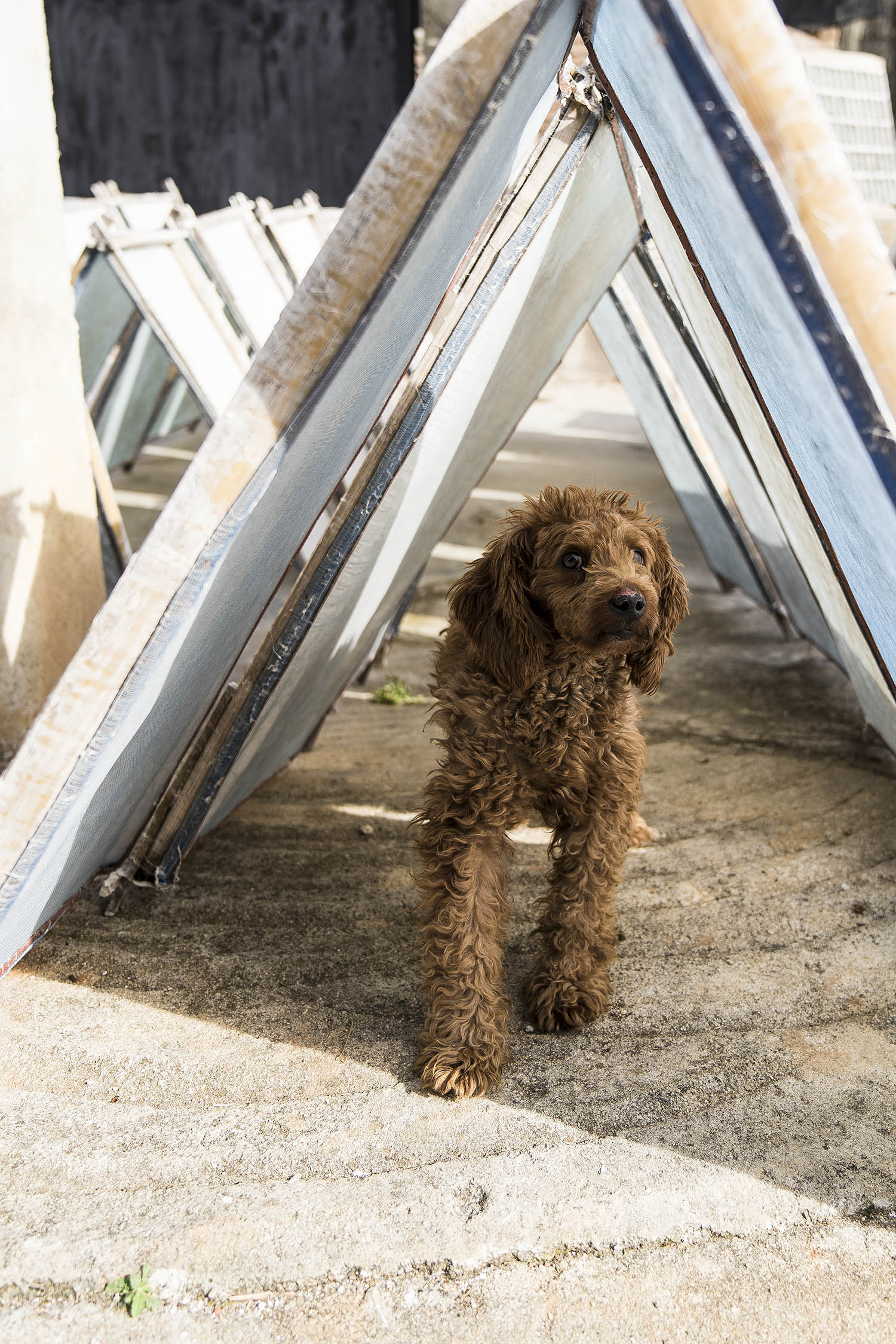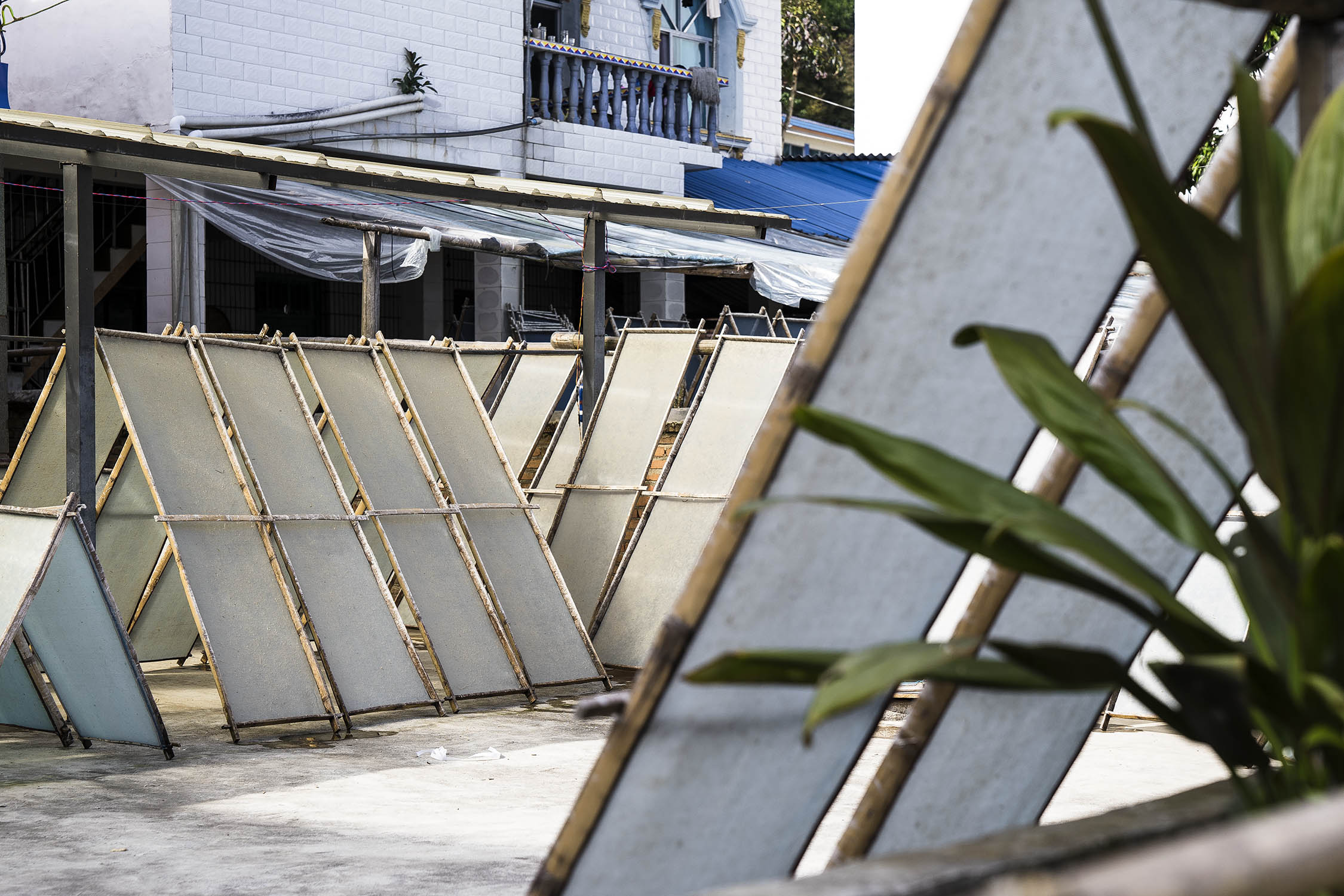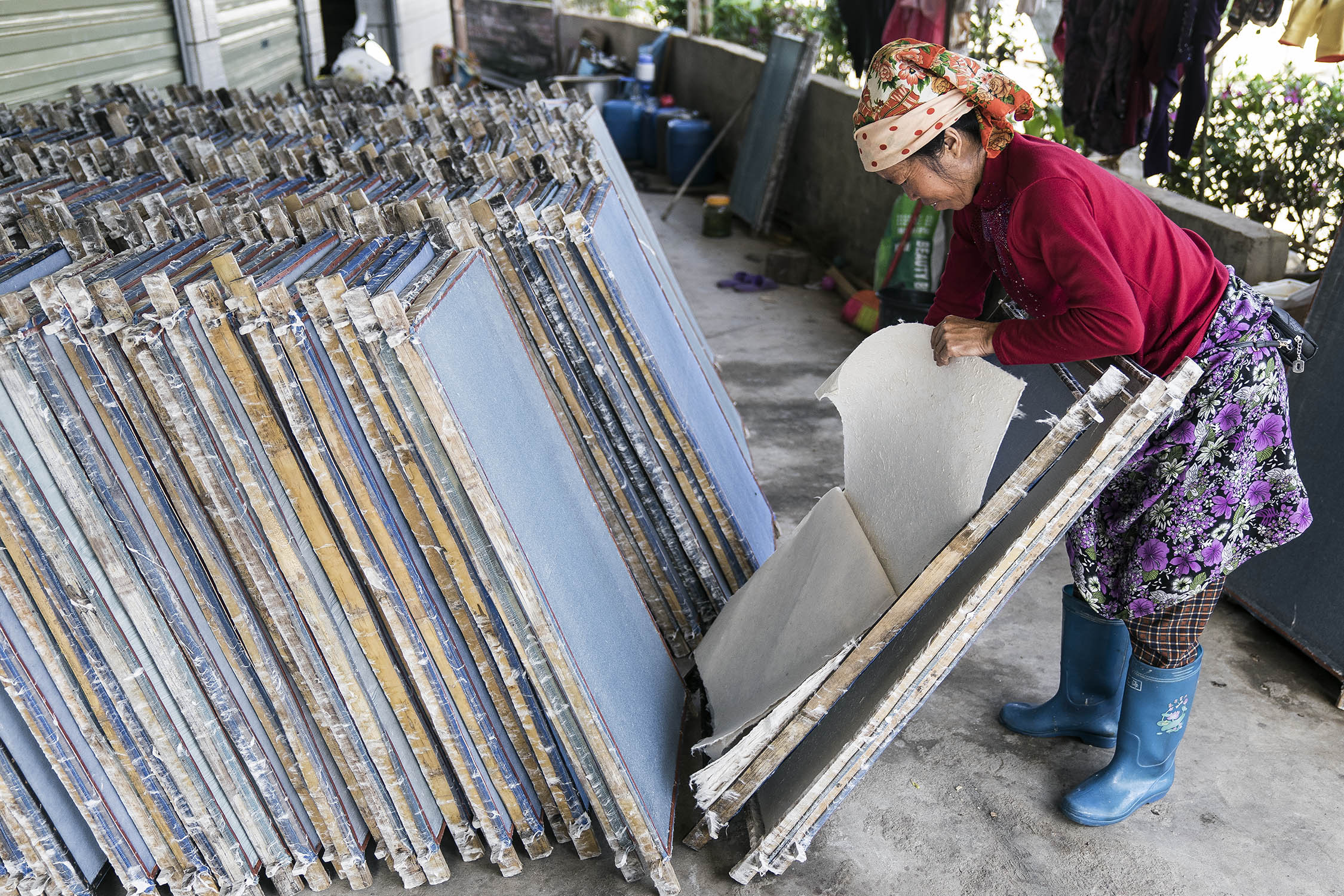the paper village
THE CHINESE VILLAGE STILL MAKING PAPER BY HAND, MANZHAO
China, as we know, is a country of production lines. Our beloved Silicon Valley-engineered iPhones, London-based fast fashion brands, Kanye West-designed shoes, and even, jolly little Christmas decorations are all made in mass in the sprawling factories that cover China. Many of which are at the heart of the country’s dark and dangerous smog problem, as well as other environmental impacts, worker's rights violations, counterfeit products and even fake food.
So when we turned up in Manzhao, a traditional Dai village in south-west Xishuangbanna, we were amazed to see the entire town still embracing the art of traditional handmade crafts. Nestled among the ancient Puer tea mountains, this tiny town make paper whenever the sun is shining (which in the region's tropical climate, is most days). In Manzhao, every single family makes paper in the courtyards of their homes; working in the fresh, clean air and making everything by hand.
Dai people are one of 25 ethnic minorities that live in Yunnan, and for the Dai, paper is a ladies' game. Women are seen as artisans of the community, and mothers have passed on their paper-making techniques to their daughters for generations.
The men of the village help out mainly with the grunt work, pounding the bark usually. Strolling through the village you can see the whole process in action. From boiling the bark in big outdoor cauldrons, pounding it to a watery pulp, filtering it into sheets and watching as the mesmerising rows of finished paper dry under the hot sun in just minutes.
“It only takes 7 minutes for the paper to dry in the daytime,” says Sam, our guide for the day. This quick turnaround makes paper-making a pretty lucrative business, which explains why the entire village has jumped on board. Sam tells us that masters in the village have been making paper here for the last 700 years, and that Manzhao paper is well-renowned in the paper biz – usually used to wrap prized puer tea cakes.
A couple working on a brown, thick paper tell us they are making a tea box, and that the older the tree bark the darker the paper will be. The bark, which is hauled in from forests in Myanmar, is boiled for up to 10 hours, then pounded until it softens.
A group of entrepreneurial ladies had invested in a pulping machine to cut out the strenuous task of pounding the bark. It's the only one in town, but they let their neighbours rent it if they have big orders and need the paper pulp quickly. Sam tells us the village works in a co-op style; the village leader will often organise several families to work on big orders to share the profits.
Most families will make about 300 sheets per day, each sheet retailing for about 1–2 yuan (less than 40 cents). Some are decorated with rose petals or local flowers, and most paper is made to order. I ask Sam why people still care so much about making paper by hand, when almost everything else is made by machines or in factories. “People say that handmade paper is like art – they prefer to wrap their tea in this paper to make it look more beautiful and more special,” he explains. “This is natural, there’s no chemicals like machine-made paper. There's kind of a soul in it.”
We pick up a couple of sheets to buy as Christmas wrapping paper for our folks. The paper is an unbleached creamy shade and has texture, feeling. This quiet little town was no quaint village and it was certainly not a tourist attraction, it is a thriving, profitable community, and another one of China's many beautiful surprises.
Words: Eloise Basuki
Photography: Leigh Griffiths
All words and images are under copyright © 2019 strangertalk.co
















